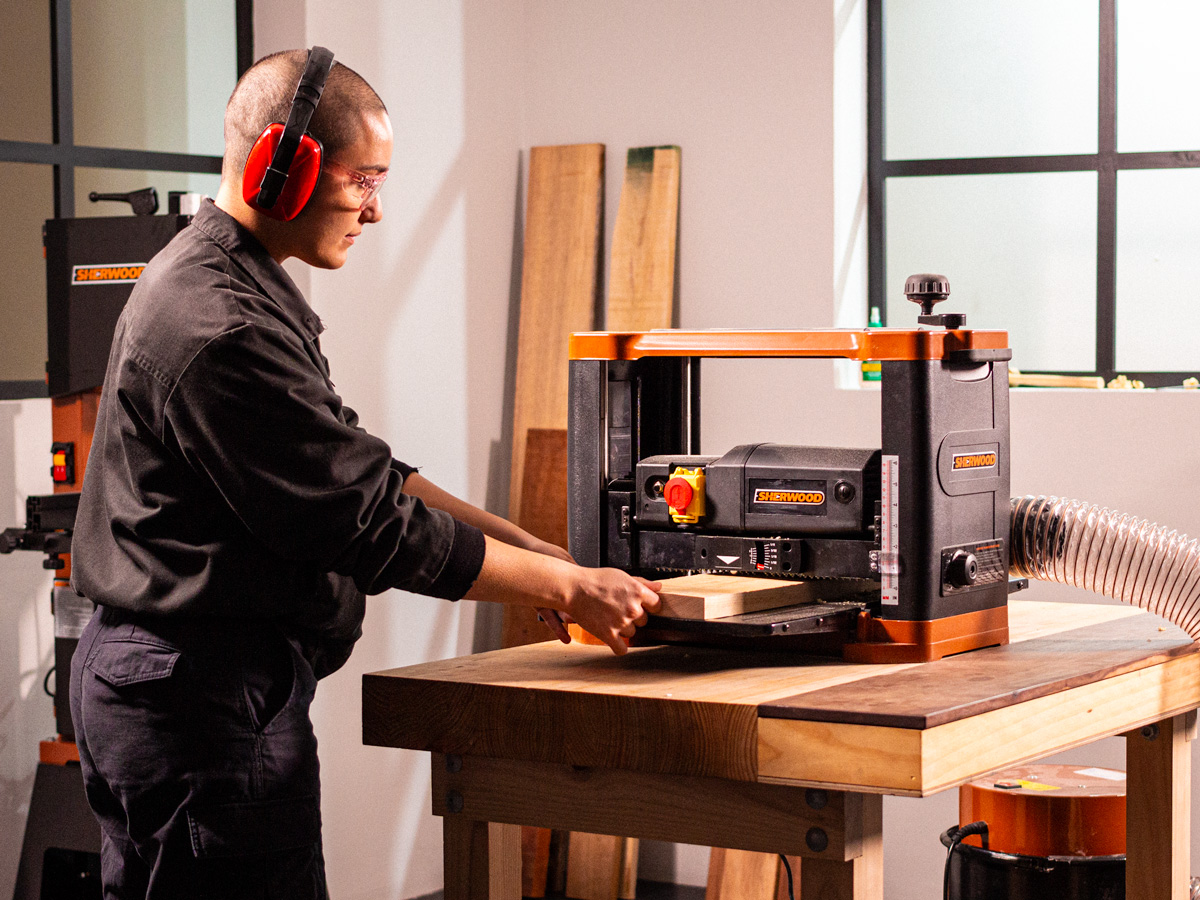
If you prefer to work with machines in your workshop, you’ll find that there are few essential machines needed to get the job done. Planing takes your rough sawn, or bent and bowed timber and turns it into a useable and squared piece, from where the magic really happens!
The thicknesser, one of the two essential planing machines, is a workshop workhorse. If you’re in the market to upgrade your existing machine, or want make it an addition to your setup, there are a few key elements you need to take into consideration.
SIZE AND TYPES
The first stop on your checklist is capacity. This will mostly be determined by the size of your materials, project, and the space the thicknesser will live in. If you’re creating panels for table tops, you’ll need something bigger than benchtop thicknesser. Likewise, if you make intricate boxes, a large stationary thicknesser is probably overkill.
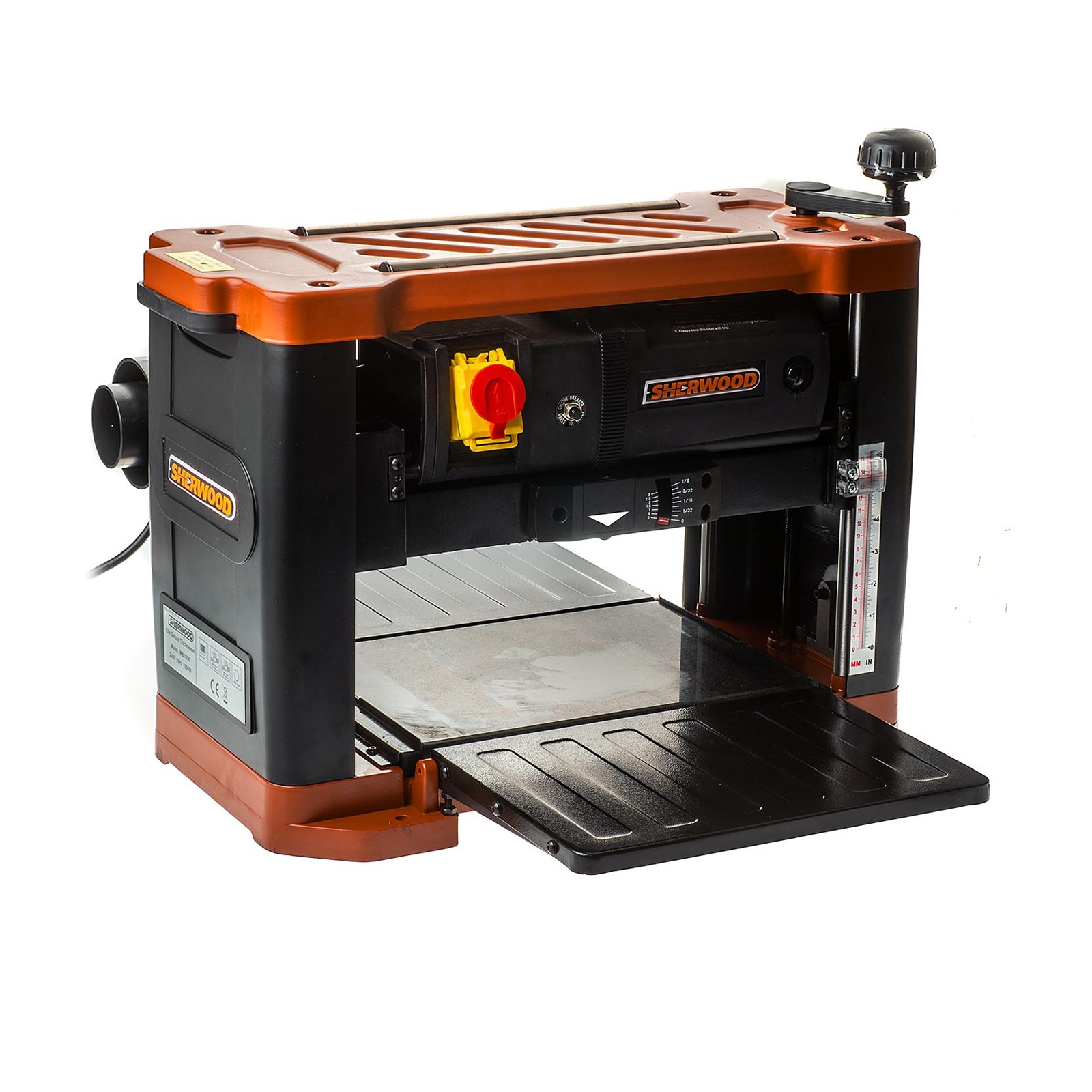 Benchtop
Benchtop
Some of the most popular in the Sherwood range, these small machines fit easily on top of benchtops in home and small workshops alike. They are light and portable, able to be taken with you wherever you may need them. As the smallest, they have the least capacity in terms timber dimensions that can be fed through them. However, with a feature-packed model like the Sherwood Precision Helical Head 13in Thicknesser, good things come in small packages.
Portable
Designed with a smaller footprint than their stationary counterparts, portable thicknessers are the next step up in size from benchtop machines. Castors located within the machine base allow this thicknesser to be moved around the workshop as needed. These machines also have an increased size capacity from our benchtop models, jumping from 13in to 15in in planing width.
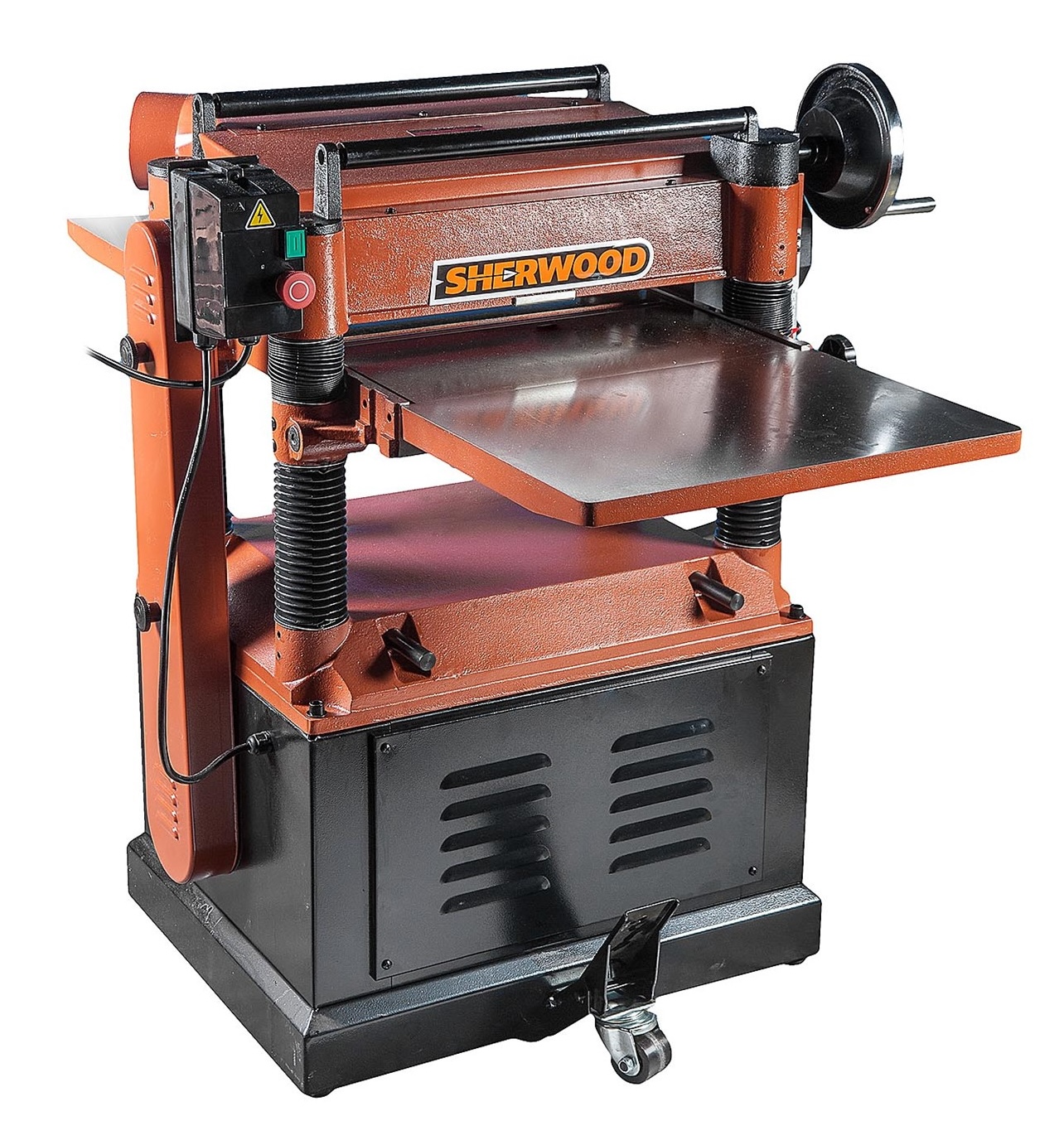 Stationary
Stationary
Next up are stationary Heavy-duty or Industrial thicknessers. Whilst these machines do still have castors for movability, they are designed to be a fixed placement in the workshop. The capacity of these machines is either 16in or 20in, with an increased height planing capacity of 203mm and a powerful induction motor.
Combination machines
Combination machines marry the thicknesser and jointer into one machine, a great saving economically and spatially. Available in 10in, 12in and 16in models, they give you multiple options when it comes to sizing capabilities, without taking up the floor footprint or benchtop space of two separate machines.
MOTOR
Your next consideration is going to be how much power you need to complete your projects. If you are not thicknessing large amounts of timber often, chances are you are not going to require as much power. However, if you are running red gum through that thing all the live long day, a Heavy-duty or Industrial machine is the best choice.
Universal Motors
Smaller machines such as our benchtop thicknessers use universal motors. These motors are compact, lightweight, and offer higher starting torque and running speeds. If you find you run your thicknesser for short intervals multiple times a day, or realise you’ve forgotten to run some timber through and need to crank it back up again, opt for a universal motor.
Do note, however, that these kinds of motors use brushes to keep the motor spinning. As these are wearable parts, these motors are not recommended for continuous or heavy-duty use.
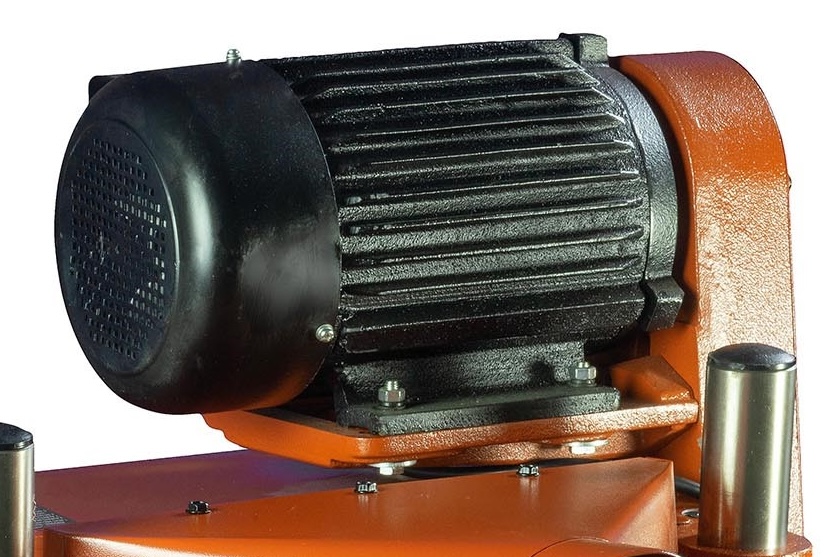 Induction Motors
Induction Motors
Larger stationary machines use induction motors which are more powerful, reliable, efficient and quieter. These motors are brushless, and run off magnetic fields, which means no need to replace wearable brushes. These motors are a lot heavier and pricier than universal motors.
Just because you have the space and want the best quality, doesn’t mean you need to buy a machine with an induction motor. The weight of these motors, whilst adding a stabilising effect to the machine, means they can be a pain to move around. They are slow to start, they take longer to warm up and they don’t enjoy being turned on and off again regularly.
CUTTERHEAD
Hand-in-hand and as important as the kind of power your thicknesser can deliver, is the kind of cutterhead it uses.
Straight Blade Cutterheads
Straight blade cutterheads are your entry level cutterheads. Many beginners will opt for a straight blade setup simply due to the price difference compared to the helical cutterheads – they are a lot cheaper! And most importantly, they will get the job done. The blades are able to be resharpened as necessary via a resharpening service or even a planer blade sharpener.
The blades do require correct setting in the cutterhead to ensure optimal use. Due to the angle of cut and the reduced number of blades, these cutterheads run significantly louder than their helical counterparts. Unfortunately, if the blades get damaged, they will need to be replaced rather than resharpened.
Helical Cutterheads
Helical cutterhead are the cream of the crop in woodworking planing operations. They are overall quieter, more efficient, long-lasting and require less maintenance.

The Sherwood helical cutterheads are designed with a true shear cut. As the cutting knives run up the helical spiral, they set at an angle relative to the previous knife. This means that rather than hitting the material at a 90° angle, each knife slices the grain at an angle, shearing away the timber. This provides for a very efficient and smooth cut, and means that helical heads require less horsepower, create less snipe, make smaller chips and operate with far less noise than other types of cutterheads.
Unlike straight knives, the knives on a helical head do not need to replacing when one side is damaged or dull. Rather, the knife is simply rotated, only needing to replaced when all four edges are dull.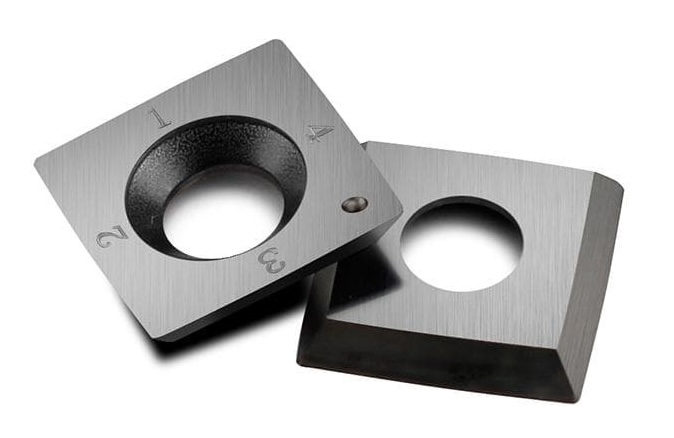
Whilst these cutterheads are significantly more expensive than their straight blade counterparts, your initial investment is paid back in no time. Compared to the cost of replacing straight blades when one gets a small ding, or resharpening costs over a number of years, you really are just taking all of these costs and making that payment in one large sum with a spiral head - with all the other added benefits of the helical head as well. It’s a no brainer!
Don't get it twisted!
There can be some confusing language around spiral and helical cutterheads. Segmented spiral heads are the lovechild of a straight blade and helical cutterhead, but without the helical path engineering, they don’t have any of the spiral cutterhead advantages. Check that the machine’s knives cut with a helical spiral pattern to know you’re getting the real deal.
If you’ve already got a straight blade or segmented spiral head and you’re fretting over this new information, don’t panic! We sell helical cutterhead upgrades to suit all of the Sherwood thicknesser and jointers, as well as one for a DeWalt DW735-XE.
OTHER FEATURES
Below is a list of additional features you can find amongst thicknessers, and can be an important consideration when deciding what is most important for your needs
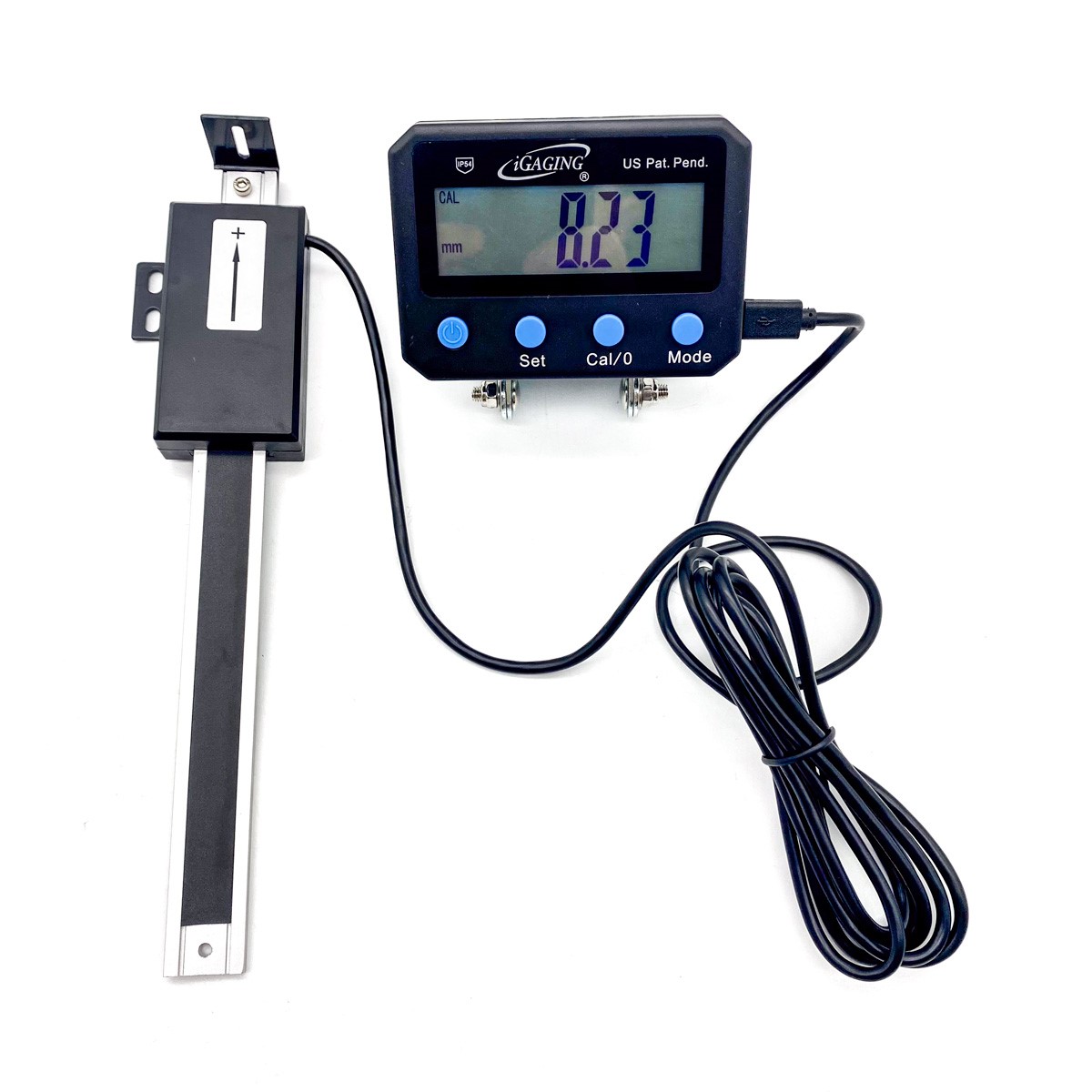 Digital Read Out (DRO)
Digital Read Out (DRO)
DROs are a handy tool when it comes to precision planing. If you need exacting measurements, or want to zero out your scale for repeatable operations, DROs may be an essential feature for you.
Cutterhead Lock
If your thicknesser features a moveable cutterhead, cutterhead locks give added stability to cutterhead. They work to lock in the height of the cutterhead to give you precise planing without any movement.
Fixed Cutterhead
Sherwood’s Industrial model thicknessers feature a fixed cutterhead, where the planer bed moves rather than the cutterhead. This provides the most precise adjustment, and gives zero movement of the cutterhead when working.
Height Setting Lock
If you find that you are typically planing to set dimensions, say half an inch, height setting locks enable you to quickly and easily lock in to a set standard height. Run your material through with the knowledge each piece is going to repeated exactly as you need it.
Two-speed Gearbox
Two-speed gearboxes allow you to change the feed speed of your thicknesser, slowing down for precise work, or speeding up for when you’re on a deadline!
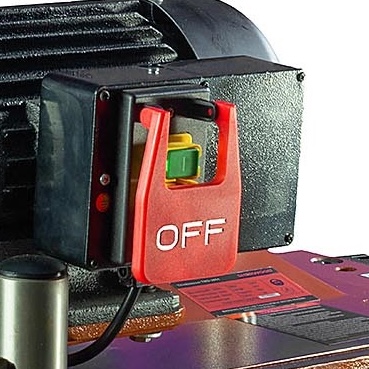 Quick Stop
Quick Stop
All Sherwood machines are equipped with a large, quick-stop button. An essential safety feature, in an easy to reach position if you or your workpiece is in danger.
Dust Extraction
All Sherwood thicknessers feature dust extraction ports at the rear or sides of the machines. Thicknessing can create quite a lot of mess, especially if you have a lot of timber to get through, it is important for your own and your machine’s health to effectively extract debris.
Finally, like all machines, thicknessers require maintenance. Here is a nice video from Robin Lewis on how to ‘Maintain your Thicknesser’
Shop Thicknessers Now!